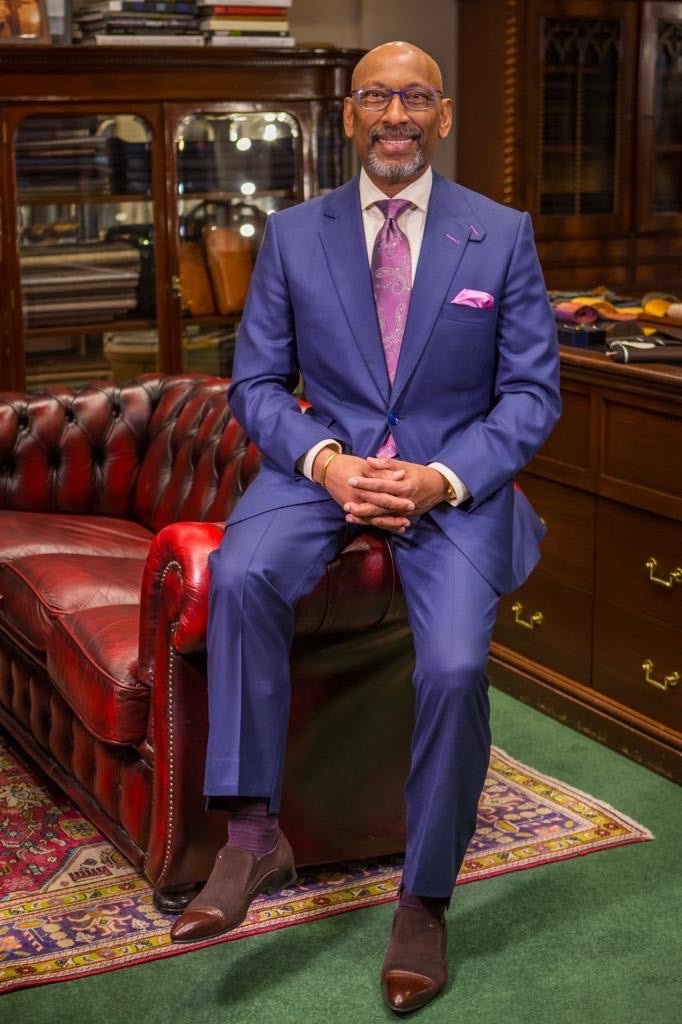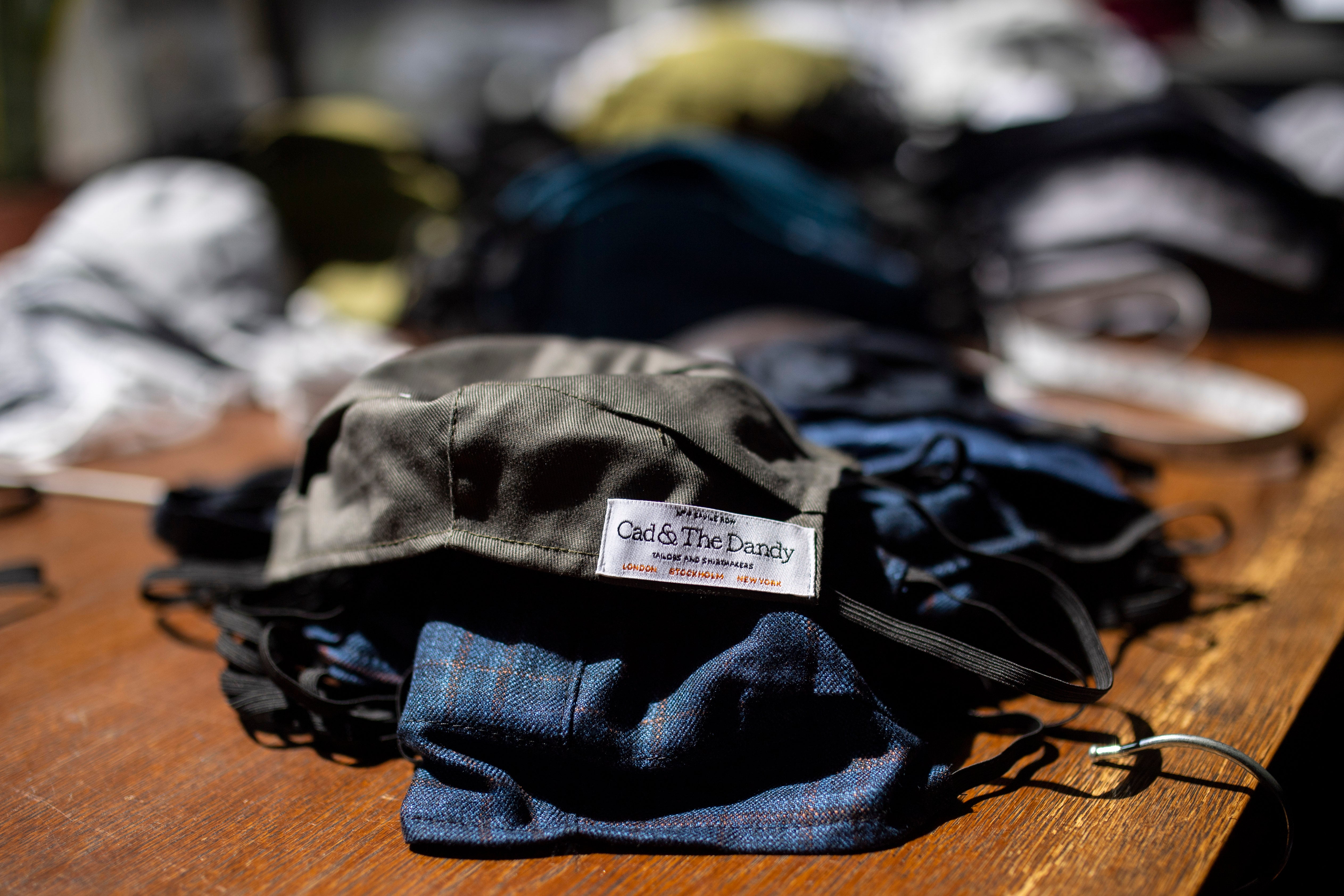How lockdown left Savile Row hanging by a thread
With international fittings limited by travel restrictions and little need for formal wear in lockdown, London’s world famous Savile Row is fearing for its future. Emily Lawford speaks to those who’ve already left – and those who are fighting to stay

A month before lockdown started, bespoke tailoring brand Kilgour closed its Savile Row shop doors for the last time.
“We were all made redundant in February,” Delroy Smith, a former cutter at Kilgour, explains. “Now the business is just online.”
Kilgour was the latest in a line of tailors to leave Savile Row in the past two years, following internationally renowned brands including Hardy Amies, Stowers, and Alexander McQueen in shutting up shop as lessening demand for formal clothes, coupled with high rents and business rates, made it increasingly hard to turn a profit.
The situation has only worsened as the Covid-19 pandemic has made selling luxury suits almost impossible.
Savile Row has been a bastion of bespoke tailoring for more than 200 years – in fact, the term “bespoke” is understood to have originated there. Tailors first came to the Row in 1803 and it quickly developed a reputation for traditional suits of the highest quality, a reputation recognised internationally today. Bespoke suits tend to cost around £5,500, though most traditional tailors now also offer more affordable, ready-to-wear ranges.

A few decades ago, the 100-metre strip contained more than 40 tailoring houses. If a cutter lost his job at one, he could walk across the Row and swiftly get a job in another. Now only a handful of tailors are left – and 10 storefronts on the street lie empty.
“Every week, I’m hearing that somebody who I came up in the trade with has been made redundant,” says Smith, who now runs his own tailoring business from home. “That old community is gone.”

Anthony Rowland lost his front-of-house job at Henry Poole last month. “I was sort of expecting it,” he says. “Next to nobody was coming in. The trouble is at the moment people can’t travel.”
Savile Row has become dependent on international customers in recent years, with at least 60 per cent of its customers based overseas. But with international fittings limited by travel restrictions, and little need for formal wear in lockdown, some tailors are barely able to sell any stock.
Maurice Sedwell was getting 20 orders a month before the pandemic. Owner Andrew Ramroop says it has only received two orders since March.
Last year the company paid £110,000 in business rates. In spring the government suspended business rates until March 2021 – a date many tailors are dreading. “As determined I am that we continue, I cannot see Maurice Sedwell surviving on Savile Row beyond March next year,” Ramroop says.
Maurice Sedwell was getting 20 orders a month before the pandemic. Owner Andrew Ramroop says it has only received two since March
The company’s rates have increased by 12.5 per cent each year for the past seven years, while rent prices have almost doubled.
“The landlords have been very greedy with rental demands,” Ramroop says. “We need protection for Savile Row tailors.”
“Our main focus right now is survival,” says William Skinner, chair of the Bespoke Association, which in 2017 managed to get the Row classified as a special policy area, making it harder for tailors to be replaced by other tenants. “We need more relief from rents and business rates, or tailors cannot afford to stay. For someone coming down the street, there are so many empty buildings. It really looks bleak.”
Skinner, who owns Dege & Skinner, says, were it not for the costs, many tailors “would suit Savile Row very well – and would get a bit more life back in it”.
He names Kathryn Sargent, the first female cutter to open her own tailoring house. She rented a storefront on the Row in 2018 but closed when the costs of operating proved too high.
Bespoke tailors’ profit margins have long been narrow. “We make everything by hand. There’s a lot of work and a lot of time that goes into the making of a suit,” Skinner says. “Sometimes it feels like all we are doing is working to pay our rents and our rates.”
I walked out of my shop a month ago and there was a yoga class going on in one of the empty shops. Tailors would be turning in their graves
Most properties on the Row are owned by the Pollen Estate, managed by Julian Stocks at Knight Frank. The estate has been helping tenants through the pandemic on a “case-by-case basis”, Stock says, giving rent holidays and other payment plans to struggling tailors. “Our ambition has been to make sure that all our tailors make it through and out the other side.”
Rent prices are higher elsewhere in Mayfair, he adds. “We haven’t pushed things as far as others have.”
However, he believes tailors may have to adapt to fit modern demands. “Businesses do need to evolve and change, because perhaps people aren’t wearing suits as much as they used to, and they need to provide other forms of clothing to attract new customers.”
Stocks would like different luxury brands to fill some of the empty shops in the Row. “There’s already a shoe company. I’d love to get a really cool watch brand in.”

A recent addition is The Service, a coffee shop which displays mannequins wearing bespoke suits from the Row’s tailoring houses.
Its founder, James Sleater, who owns Savile Row tailor Cad & the Dandy, hopes the cafe will encourage people to buy bespoke without being intimidated by the Row’s reputation.
“Savile Row needs to do more to open itself up and drop down the barriers of pretension,” he says. “Back in the day, tailoring shops were run like gentlemen’s clubs. You couldn’t just come through the door, you had to be referred by existing customers. And there’s still a bit of that. Guys generally come in Cad & the Dandy sweating with fear – and we’re young. Savile Row needs to reflect the changing world.”
Will Savile Row remain a tailoring hub after the pandemic, or will its tailors be scattered around the city? Richard Anderson, owner of his eponymous tailoring house, believes the Row must survive. “Why would you want to kill the golden goose? Savile Row is still perceived in the world as the best. Tailoring is one of the only industries that Britain is known for being best at.”
He saw something recently on the Row that made his blood run cold. “I walked out of my shop a month ago and there was a yoga class going on in one of the empty shops. Tailors would be turning in their graves.”
Subscribe to Independent Premium to bookmark this article
Want to bookmark your favourite articles and stories to read or reference later? Start your Independent Premium subscription today.



Join our commenting forum
Join thought-provoking conversations, follow other Independent readers and see their replies
Comments